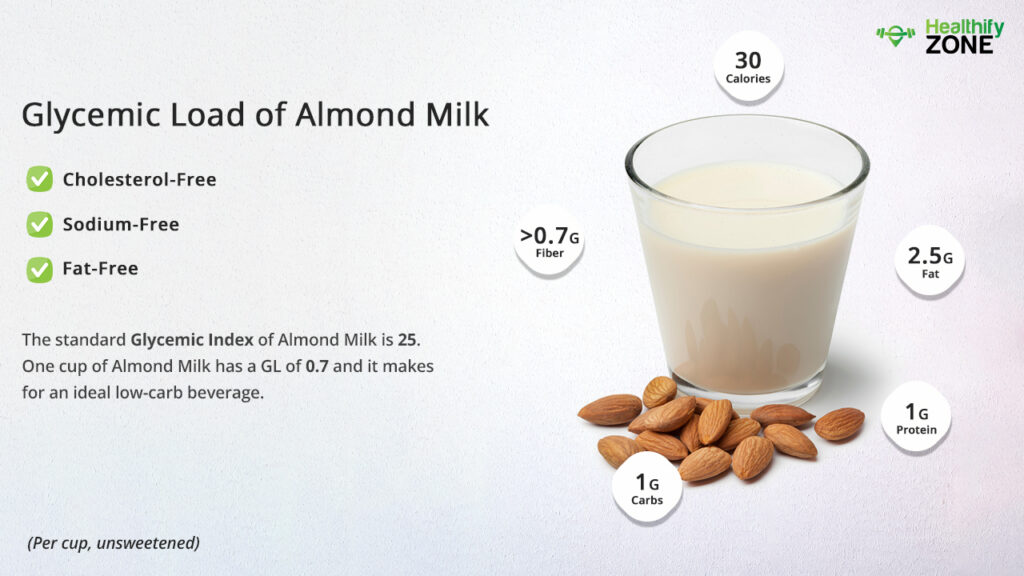The quantification of carbohydrates present in food with the pace with which it increases the blood glucose levels is called the Glycemic Load. A simple way of making healthier dietary choices is following the Glycemic Index. It helps with the comparison and shows alternative sources of nutrients according to your blood glucose levels. Glucose has a higher blood glucose response compared to fructose.
Known to be the most popular plant-based milk in the United States, Almond Milk is rich in several healthy nutrients. However, in comparison to whole almonds, it is watered down and misses important fibers. It is made by blending together water and almond and straining it to remove solids. An alternative to making it is simply adding water to almond butter. According to the International GI Tables, its Glycemic Index is 25, which means that it does not cause an instant spike in your blood glucose levels.

Almond milk has a nutty flavor and creamy texture, just like milk, and it comprises healthy nutrients like
- Vitamin E
- Calcium
- Potassium
- Magnesium
- Riboflavin
- Phosphorous
How to Calculate Glycemic Load of Almond Milk?
The standard Glycemic index of almond milk is 25. If we want to talk about diet, the key to prevent diabetes or any chronic illness is to distribute the carbohydrate consumption content throughout the day and manage the sugar levels in the body correctly— owing to very low carbohydrate contents, almond milk can be recommended as a regular alternative to dairy milk. Hope both almond milk and almond butter are nutritional and calorie-dense.

The Formula/Procedure For Calculation of Glycemic Index of the Almond Milk :
GL = GI * carbs / 100
where
- GL – glycemic load;
- GI – glycemic index;
- and carbs – the amount of carbohydrates in the portion.
| SL.NO | ALMOND MILK BY WEIGHT IN (g) | GLYCEMIC LOAD |
| 1. | 100 ml of Almond Milk | 0.35 (very low) |
| 2. | 250 ml of Almond Milk | 0.87 (very low) |
| 3. | 500 ml of Almond Milk | 1.75 ((very low) |
| 4. | 1 ltr of Almond Milk | 3.5 (low) |
| 5. | One tablespoon of almond butter | Very Low |
| 6. | 1 Cup of Almond Milk(150 g) | 0.7 (very low) |
Is Almond Milk to Consume If You Have Diabetes?
Almond milk is a very low-carb beverage, making it perfect for people on a low-carb diet or battling diabetes. You will find that almond milk in the market has added sugar. However, unsweetened almond sugar has less than 2% carbs in it. It is also high in fat and protein compared to its carb content. For that reason, it does not cause much of a rise and is a good choice for people who have diabetes.
Can I Eat Almond Milk During a Fat-Loss Diet?
You can have almond milk during a strict fat-loss diet. If you are looking for good results, you should avoid having more than 250 ml of almond milk.

- A 250g serving of water melon has a GL of 0.87 which is pretty low and allowed.
- You can use almond milk in several ways in your fat-loss diet.
Can I Eat Almond Milk During a Low-Carbohydrate Diet?
You can have almond milk during a low- carbohydrate diet. Sugar-free almond milk has less than 2% carbs or 3.43 g in one cup. This is excellent compared to low-fat cow’s milk, which contains 5% carbs, 12 g in a cup. Almond milk is an excellent choice if you are on a low-carbohydrate diet.